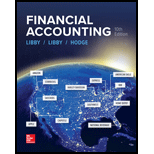
1)
Complete the comparing across time analysis of Company S’s comparative financial statement.
1)
Explanation of Solution
Comparison of across time analysis of financial statements: In this method of analysis of financial statements, the amount of each current year item of the financial statement is compared with the previous year amount. The amount of each item increased or decreased in the current financial statements, and its respective percentage can be computed by taking the earlier statement as the base.
Comparing across time analysis of financial statements of Corporation S:
| Corporation S | ||||
| Comparative Income Statement | ||||
| Year Ended Year 2 | ||||
| Particulars | Year 2 | Year 1 | Increase (decrease) | |
| Amount (A) | Amount (B) |
Amount (C) |
Percent (D) | |
| Sales revenue | $ 453,000 | $ 447,000 | $6,000 | 1.34% |
| Cost of goods sold | ($ 250,000) | ($ 241,000) | ($9,000) | 3.73% |
| Gross profit | $ 203,000 | $ 206,000 | ($3,000) | -1.46% |
| Operating expenses (Including interest on bonds) | ($ 167,000) | ($ 168,000) | ($1,000) | -0.60% |
| Pre-tax Income | $ 36,000 | $ 38,000 | ($2,000) | -5.26% |
| Income tax expense | ($ 10,800) | ($ 11,400) | ($600) | -5.26% |
| Net income | $ 25,200 | $ 26,600 | ($1,400) | -5.26% |
Table (1)
| Corporation S | ||||
| Comparative | ||||
| As on Year 2 | ||||
| Particulars | Year 2 | Year 1 | Increase (decrease) | |
| Amount (A) | Amount (B) |
Amount (C) |
Percent (D) | |
| Cash | $ 6,800 | $ 3,900 | $2,900 | 74.36% |
| Accounts receivable (net) | $ 42,000 | $ 29,000 | $13,000 | 44.83% |
| Merchandise Inventory | $ 25,000 | $ 18,000 | $7,000 | 38.89% |
| Prepaid expenses | $ 200 | $ 100 | $100 | 100.00% |
| Property and equipment (net) | $ 130,000 | $ 120,000 | $10,000 | 8.33% |
| Total assets | $ 204,000 | $ 171,000 | $33,000 | 19.30% |
| Accounts payable | $ 17,000 | $ 18,000 | ($1,000) | -5.56% |
| Income taxes payable | $ 1,000 | $ 1,000 | $0 | 0.00% |
| Bonds payable (Interest rate: 10%) | $ 70,000 | $ 50,000 | $20,000 | 40.00% |
| Common stock($10 par value) | $ 100,000 | $ 100,000 | $0 | 0.00% |
| $ 16,000 | $ 2,000 | $14,000 | 700.00% | |
| Total liabilities and equity | $ 204,000 | $ 171,000 | $33,000 | 19.30% |
Table (2)
2)
Determine the amount of
2)
Explanation of Solution
Current ratio: Current ratio is used to determine the relationship between current assets and current liabilities. The ideal current ratio is 2:1.
Current ratio for Year 2:
Current ratio for Year 1:
The current ratio is increased by 1.43
Note: Current assets include Cash, Accounts receivable (net), Merchandise inventory and prepaid expenses. Current liabilities include Accounts payable and Income taxes payable.
Want to see more full solutions like this?
Chapter 13 Solutions
Financial Accounting
- Nonearrow_forwardParker Enterprises bought a commercial property with a cash payment of 75,000 and a purchase money mortgage of $120,000. In addition, Parker paid $350 for a title insurance policy and $450 for a property survey. Parker's basis in this property is __. a. $140,000 b. $140,200 c. $195,800 d. $190,200 provide answerarrow_forwardWhat were the equivalent units for conversion costs in the Blending Department for Novemberarrow_forward
- Determine the net profit under variable costingarrow_forwardPlease explain this financial accounting problem with accurate financial standards.arrow_forwardDuring June, the production department of a process operations system completed and transferred to finished goods a total of 82,000 units of product. At the end of May, 18,000 additional units were in process in the production department and were 70% complete with respect to materials. The beginning inventory included a materials cost of $92,400 and the production department incurred a direct materials cost of $276,800 during June. Compute the direct materials cost per equivalent unit for the department using the weighted-average method.arrow_forward
- Can you explain the correct approach to solve this financial accounting question?arrow_forwardCan you help me solve this general accounting problem using the correct accounting process?arrow_forwardNovak Inc. sells one product, its waterproof camping tent. It began operations in the current year and had an ending inventory of 6,200 units. The company sold 18,500 units throughout the year. Fixed manufacturing overhead is $9 per unit, and total manufacturing cost per unit is $31.75 (including fixed manufacturing overhead costs). What is the difference in net income between absorption and variable costing? Step by step answerarrow_forward

 AccountingAccountingISBN:9781337272094Author:WARREN, Carl S., Reeve, James M., Duchac, Jonathan E.Publisher:Cengage Learning,
AccountingAccountingISBN:9781337272094Author:WARREN, Carl S., Reeve, James M., Duchac, Jonathan E.Publisher:Cengage Learning, Accounting Information SystemsAccountingISBN:9781337619202Author:Hall, James A.Publisher:Cengage Learning,
Accounting Information SystemsAccountingISBN:9781337619202Author:Hall, James A.Publisher:Cengage Learning, Horngren's Cost Accounting: A Managerial Emphasis...AccountingISBN:9780134475585Author:Srikant M. Datar, Madhav V. RajanPublisher:PEARSON
Horngren's Cost Accounting: A Managerial Emphasis...AccountingISBN:9780134475585Author:Srikant M. Datar, Madhav V. RajanPublisher:PEARSON Intermediate AccountingAccountingISBN:9781259722660Author:J. David Spiceland, Mark W. Nelson, Wayne M ThomasPublisher:McGraw-Hill Education
Intermediate AccountingAccountingISBN:9781259722660Author:J. David Spiceland, Mark W. Nelson, Wayne M ThomasPublisher:McGraw-Hill Education Financial and Managerial AccountingAccountingISBN:9781259726705Author:John J Wild, Ken W. Shaw, Barbara Chiappetta Fundamental Accounting PrinciplesPublisher:McGraw-Hill Education
Financial and Managerial AccountingAccountingISBN:9781259726705Author:John J Wild, Ken W. Shaw, Barbara Chiappetta Fundamental Accounting PrinciplesPublisher:McGraw-Hill Education





